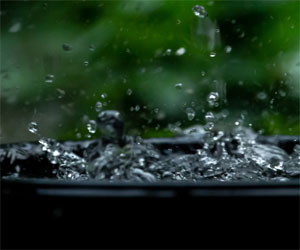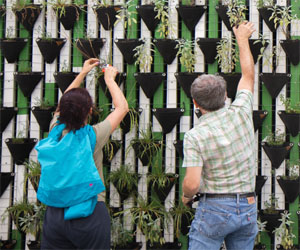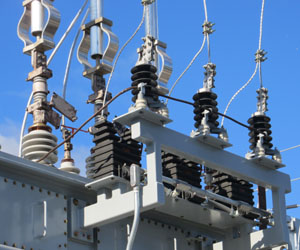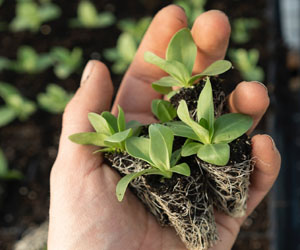


Embracing Minimalism For A More Fulfilling Life

In a world where consumerism often encourages us to acquire more, many people are choosing a different path - the path of living with less. Minimalism, as it's commonly known, is a lifestyle that centers around the intentional pursuit of less, focusing on quality over quantity and experiences over possessions. This philosophy, while rooted in simplicity, can lead to a more fulfilling and meaningful life. In this article, we will explore the principles of living with less and how it can benefit your well-being and overall happiness.
1. Declutter Your Space
One of the initial steps in embracing minimalism is decluttering your physical space. Take a closer look at your belongings and consider what truly adds value to your life. Let go of possessions that no longer serve a purpose or bring you joy. A clutter-free environment can have a calming and liberating effect on your mind.
2. Reduce Material Possessions
Minimalism encourages you to own less and be more selective about what you acquire. Instead of filling your life with material possessions, focus on a few high-quality items that are meaningful to you. This approach not only simplifies your surroundings but also reduces the pressure of maintaining a multitude of belongings.
3. Simplify Your Wardrobe
A minimalist wardrobe typically consists of versatile, timeless pieces that can be mixed and matched. This not only makes getting dressed in the morning easier but also reduces the time and money spent on clothing. A smaller wardrobe can be more reflective of your personal style and eliminate the stress of decision fatigue.
4. Quality Over Quantity
In a world where we are often encouraged to buy more for less, minimalism emphasizes the importance of quality over quantity. Instead of opting for numerous inexpensive items, invest in high-quality products that are built to last. This not only reduces waste but also leads to a more cost-effective and satisfying life in the long run.
5. Mindful Consumption
Minimalism promotes mindful consumption. Before making a purchase, think about whether the item aligns with your values and needs. Consider whether it will enhance your life or merely contribute to clutter. Being mindful of what you bring into your life can lead to more intentional and fulfilling choices.
6. Reduced Environmental Impact
By living with less and consuming mindfully, minimalism can have a positive impact on the environment. Reducing waste, conserving resources, and making eco-friendly choices are intrinsic to this way of life, which ultimately contributes to a more sustainable planet.
7. Increased Time And Freedom
Living with less not only simplifies your surroundings but also frees up time and mental space. With fewer possessions to manage, you have more time to focus on what truly matters - your relationships, experiences, and personal growth. This can lead to a greater sense of freedom and fulfillment.
8. Enhanced Well-Being
Many people who embrace minimalism report an increased sense of well-being and happiness. A life with less clutter and fewer distractions can lead to reduced stress and anxiety, improved mental health, and a more profound connection with the things that truly matter.
Living with less is not about deprivation but about embracing a lifestyle that fosters intention, purpose, and happiness. By simplifying your physical space, reducing material possessions, and focusing on quality, minimalism can lead to a more fulfilling and meaningful life. It encourages a shift from the pursuit of possessions to the cultivation of experiences and a greater connection to the people and moments that truly matter. Embracing minimalism is a powerful step toward living a life that is more intentional, mindful, and deeply satisfying.
The Key To Vitality
 The Significance Of Nutrient Absorption
The Significance Of Nutrient Absorption
Nutrient absorption is the bridge between the food we eat and the nutrients our bodies need to function optimally. It is crucial for maintaining health, supporting growth, and providing energy for daily activities. Without effective nutrient absorption, the body would struggle to obtain the vital elements required for various bodily functions.
The Digestive System's Role
The process of nutrient absorption begins in the digestive system, where food is broken down into smaller molecules through mechanical and chemical digestion. The small intestine, in particular, plays a central role in nutrient absorption. Its walls are lined with tiny finger-like projections called villi, which are covered in even smaller hair-like structures known as microvilli. These structures increase the surface area available for nutrient absorption.






Cultivating A Passion For Gardening
 Defining The Green Thumb
Defining The Green Thumb
A "green thumb" is a colloquial term that signifies a person's natural aptitude and success in gardening. Those with green thumbs seem to effortlessly grow thriving plants, lush gardens, and abundant crops. They have a knack for understanding the needs of plants, diagnosing issues, and nurturing them to flourish. Many people believe that this ability is an inborn talent, but the reality is more nuanced.
The Science Of Green Thumbs
While some individuals may have a more intuitive understanding of plants due to their upbringing or exposure to gardening from a young age, the concept of the green thumb is not solely based on genetics. Instead, it is rooted in knowledge, experience, and a deep appreciation for the natural world.
Education: Green thumbs often have a solid understanding of horticulture, botany, and gardening techniques. This knowledge allows them to make informed decisions about planting, soil preparation, and care.
Observation: Successful gardeners pay close attention to their plants. They observe growth patterns, spot issues early, and take corrective action, ensuring that plants receive the right care.
Experimentation: Green thumbs aren't afraid to try new things. They experiment with different plants, techniques, and approaches to discover what works best in their specific environment.
Patience: Gardening requires patience and dedication. Green thumbs are willing to invest time and effort in their gardens, understanding that success often comes with experience.
Protecting Our Planet Through Sustainable Practices
 Environmental benefits are critical for several reasons:
Environmental benefits are critical for several reasons:
Ecosystem Health: By reducing pollution, habitat destruction, and resource depletion, environmental benefits help maintain the health and diversity of ecosystems.
Climate Change Mitigation: Sustainable practices that reduce greenhouse gas emissions and promote carbon sequestration are essential for combating climate change.
Resource Conservation: Environmental benefits help protect and conserve vital resources like water, soil, and biodiversity.
Human Health: A cleaner environment means better air and water quality, which directly affects human health.
Strategies For Achieving Environmental Benefits
Numerous strategies and practices contribute to environmental benefits:
Renewable Energy: Transitioning to renewable energy sources like solar, wind, and hydropower reduces greenhouse gas emissions and lessens the environmental impact of energy production.
Waste Reduction: Reducing, reusing, and recycling materials minimizes waste and lowers the environmental footprint of resource extraction and disposal.
Sustainable Agriculture: Practices like organic farming, crop rotation, and agroforestry help maintain soil health, reduce chemical use, and preserve biodiversity.
Green Building Design: Energy-efficient and sustainable building designs can lower energy consumption and minimize the use of natural resources.
Paving The Way To A Sustainable Future
 1. Electric Vehicles (EVs): Electric vehicles have gained significant popularity as a greener alternative to traditional gasoline and diesel-powered cars. EVs run on electricity stored in rechargeable batteries, producing zero tailpipe emissions. The adoption of electric cars is on the rise, thanks to advancements in battery technology, extended driving ranges, and the expansion of charging infrastructure. EVs significantly reduce carbon emissions, air pollution, and dependence on fossil fuels.
1. Electric Vehicles (EVs): Electric vehicles have gained significant popularity as a greener alternative to traditional gasoline and diesel-powered cars. EVs run on electricity stored in rechargeable batteries, producing zero tailpipe emissions. The adoption of electric cars is on the rise, thanks to advancements in battery technology, extended driving ranges, and the expansion of charging infrastructure. EVs significantly reduce carbon emissions, air pollution, and dependence on fossil fuels.
2. Hybrid Vehicles: Hybrid vehicles combine traditional internal combustion engines with electric propulsion systems. These vehicles can operate on electric power at low speeds and switch to the internal combustion engine at higher speeds or when additional power is needed. Hybrid technology improves fuel efficiency and reduces emissions, making it an effective transition solution for those not yet ready to fully commit to electric vehicles.
3. Public Transportation: Efficient and eco-friendly public transportation systems, such as buses and trains, play a vital role in reducing the number of private vehicles on the road. Modern public transportation options often include electric or hybrid buses, which produce fewer emissions and offer a more sustainable means of moving people within urban areas.
A Cleaner, Safer, And Happier Living Space
 Improved Indoor Air Quality: Traditional cleaning products often release volatile organic compounds (VOCs) that can lead to poor indoor air quality. These can cause respiratory problems, allergies, and other health issues.
Improved Indoor Air Quality: Traditional cleaning products often release volatile organic compounds (VOCs) that can lead to poor indoor air quality. These can cause respiratory problems, allergies, and other health issues.
Allergen Reduction: Effective cleaning methods can help reduce allergens like dust mites, pet dander, and pollen, which can trigger allergies and asthma.
Prevention Of Mold And Mildew: Regular cleaning can help prevent the growth of mold and mildew, which can lead to respiratory problems and other health concerns.
Safer Living Environment: Cleaning without harsh chemicals reduces the risk of skin irritations, chemical exposure, and other health risks associated with chemical cleaning products.
Methods For Achieving Healthy Home Cleaning
Choose Natural And Non-Toxic Cleaners: Opt for natural cleaning solutions or non-toxic cleaning products that are free from harsh chemicals. Vinegar, baking soda, and lemon juice are great natural alternatives for many cleaning tasks.
A Brighter, Greener Future
 Energy efficiency plays a pivotal role in addressing several pressing global issues:
Energy efficiency plays a pivotal role in addressing several pressing global issues:
Environmental Sustainability: Increasing energy efficiency helps reduce greenhouse gas emissions, mitigating the effects of climate change. It allows us to meet our energy needs with a smaller ecological footprint.
Resource Conservation: Efficient energy use preserves finite natural resources like coal, oil, and natural gas. It reduces the need for extensive mining and drilling, minimizing the negative environmental impact of resource extraction.
Cost Savings: For individuals and businesses, energy efficiency translates to lower energy bills. By reducing waste and optimizing energy consumption, you can significantly cut your energy costs.
The Benefits Of Energy Efficiency
Lower Energy Bills: Improved energy efficiency translates directly into lower energy bills for households and reduced operational costs for businesses. This means more money in your pocket and increased competitiveness for companies.
Environmental Conservation: Reduced energy consumption leads to lower emissions of greenhouse gases, making a substantial contribution to environmental preservation and combating climate change.
Nurturing Sustainable And Efficient Agriculture
 The Principle Of Wicking Systems
The Principle Of Wicking Systems
Wicking systems are a type of passive sub-irrigation method that relies on capillary action to transport water from a reservoir to the root zone of plants. The basic components of a wicking system include a water reservoir, a wicking medium (commonly soil or a soilless mix), and a growing container or bed with a wick that draws water up to the plant's roots.
The key principle behind wicking systems is the movement of water through porous materials, like soil or a specialized wicking fabric, from areas of high water concentration (the reservoir) to areas of lower water concentration (the root zone). This capillary action ensures a consistent and controlled water supply to the plants, making wicking systems highly efficient.
Advantages Of Wicking Systems
Water Efficiency: Wicking systems significantly reduce water wastage by providing moisture directly to the root zone. This targeted irrigation minimizes evaporation and runoff.
Reduced Labor: Once set up, wicking systems require minimal maintenance and are well-suited for urban gardens, container gardening, and raised beds, making them an excellent choice for those with limited time or space.
Improved Plant Health: Consistent moisture levels contribute to healthier and more robust plant growth. These systems help prevent overwatering, which can lead to root rot and other water-related plant diseases.
Drought Resilience: Wicking systems can conserve water and sustain plants during dry spells, making them a valuable tool in regions prone to drought.
Customizable Design: Wicking systems can be adapted to various scales, from small pots to large garden beds and even commercial agriculture, providing flexibility and adaptability to different needs.
A Small Step Toward A Sustainable Future
 Sustainable Ingredients: Planet-conscious cleaning products use sustainable, biodegradable ingredients that break down naturally without harming ecosystems. This reduces the impact on waterways, marine life, and overall environmental health.
Sustainable Ingredients: Planet-conscious cleaning products use sustainable, biodegradable ingredients that break down naturally without harming ecosystems. This reduces the impact on waterways, marine life, and overall environmental health.
Conservation Of Resources: By choosing eco-friendly cleaning practices, we can reduce water and energy consumption. This is crucial for conserving precious resources and reducing our carbon footprint.
Effective Planet-Conscious Cleaning Practices
Eco-Friendly Cleaning Products: Seek out cleaning products that have earned eco-friendly certifications, like the "EcoLogo" or "Green Seal." These certifications ensure that the products meet rigorous environmental and health standards.
Homemade Cleaning Solutions: Making your own cleaning solutions from ingredients like vinegar, baking soda, lemon juice, and essential oils is an excellent way to embrace planet-conscious cleaning. These natural components are effective for various cleaning tasks and are safe for your health and the environment.